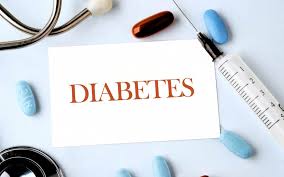
Lagos, Gbajabiamila Move to Rebuld Randle General Hospital
The Lagos State Government on Monday announced the full reconstruction and upgrade of the historic Randle General Hospital, Surulere, into a four-floor ultramodern healthcare facility. The announcement was made at a stakeholders and community engagement session held at the Femi Gbajabiamila General Hospital, Surulere, where health officials, community leaders and residents were briefed on the project’s scope, impact and interim service arrangements. Delivering the keynote address, the Special Adviser to the Governor on Health, Dr. (Mrs.) Kemi Ogunyemi, described the project as “a total transformation, not just a renovation,” aimed at restoring Randle’s legacy as one of the foremost secondary healthcare centres in Lagos. She said the hospital’s existing structure had aged beyond repair and could no longer serve the rising population or address the evolving health demands of Surulere residents. “Our people deserve facilities that meet international standards, and that is what this project will deliver,” she declared. According to Ogunyemi, the new four-floor facility will feature accident and emergency services, theatres, laboratories, wards, staff lounges, and VIP recovery spaces, alongside advanced diagnostic equipment including CT scan and MRI machines. She said the design would ensure patient dignity, faster service delivery and improved staff working conditions. The Special Adviser commended Rt. Hon. Femi Gbajabiamila, Chief of Staff to the President, for sponsoring the project, noting that his philanthropic support was consistent with his commitment to Universal Health Coverage. “From donating the Femi Gbajabiamila General Hospital to funding this new Randle project, his contributions reflect an unwavering dedication to the well-being of his people,” she said. She assured residents that while the new facility was under construction, healthcare services would be seamlessly provided at the Femi Gbajabiamila General Hospital. “Nobody will be left without care. This interim arrangement ensures that Surulere continues to receive essential services without interruption,” she explained. Ogunyemi added that the project aligns with the THEMES Plus Agenda of Governor Babajide Sanwo-Olu, particularly in strengthening health systems and environmental resilience. “This is about lives saved, futures secured and communities strengthened,” she affirmed, urging Surulere residents to see the hospital as a shared legacy. Special Adviser to the Governor on Housing, Barrister Barakat Odunuga-Bakare, described the project as “a great step forward” for Surulere. She said the stakeholders’ engagement was crucial to prevent misinformation and ensure that the community remained carried along throughout the construction phase. In his remarks, the Permanent Secretary, Lagos State Primary Health Care Board, Dr. Ibrahim Mustafa, emphasised that the reconstruction marks a defining moment for Surulere and the State. He described it as “an investment in health and in the future.” Mustafa appealed to the community for patience and cooperation during the transition, stressing that the temporary relocation of services was a necessary sacrifice for long-term benefit. “Healthcare delivery will not stop, but we need your understanding as we build a stronger and modern facility,” he said.








